Today's guest shares a nice Q&A with us. Dlesheree Gladden is the author of Wicked Hunger and she wants to tell us a little about it.
Q: When did you first start writing?
A: I first started writing when I was a teen. It was mainly just a hobby at that time, and I wasn't very good. After I got married my husband encouraged me to focus on writing and get into publishing. His support has made all the difference.
Q: Do you read much? If yes, have you always loved reading?
A: I have always loved reading. When my mom would take us to the library when I was little I rarely left with less than twenty books, and I always had them all read by the time we went back for more books.
Q: Who's your favorite author? What's your favorite book?
A: This is always such a tough question because I have so many. Can I pick two? Jim Butcher and Brandon Sanderson are at the top of my list. I love the Dresden Files and the Mistborn Trilogy.
Q: What writers have influenced you the most?
A: Patricia C. Wrede and Jim Butcher. Wrede's books were the first books I really fell in love with. Her characters brought the whole story to life. Butcher's imaginative and unique take on magical creatures and elements inspires me to stretch my mind and be creative.
Q: Do you have a favorite fictional character? Either from a book or movie or a tv show?
A: I think I'd have to pick Mat Cauthon from the Wheel of Time books. Even though 15 rather long books, he always surprised me and kept things interesting.
Q: What are you working on right now? Can you tell us something about it?
A: Too many things at once! I'm working on the sequel to Wicked Hunger, called Wicked Power, which will continue the story of Van and Zander Roth as the explore the world of the Godlings and try to figure out who to trust. I'm also working on a sequel to Escaping Fate. Soul Stone follows Arra as she discovers new abilities. A new project, Invisible, a story about an invisible boy who discovers someone is trying to hunt him down, is the last project I'm focusing on. It will be featured on Wattpad starting in Sept. 2013.
Q: Is there anything in particular that you do to get in the mood to write, or to get in the 'zone'? Any particular pre-writing routines?
A: It just depends on my mood. Sometimes I want absolute quiet, an other times I need to have music in order to concentrate.
Q: Where do you do your writing?
A: I do most of my writing either on the couch or up in the extra room that is my office/sewing room. My computer shares the desk with two sewing machines and a dressmakers dummy, but it works!
Q: How do you approach your writing? i.e. - Do you do outlines? Character bios? Etc.?
A: I jump in and keep writing until I either get stuck or finish the book. I only outline when I absolutely have to and I've never once done a character bio.
Q: Do you have any advice for other writers?
A: Read a lot. There is so much you can learn from reading other writers' work. I get a lot of inspiration from favorite books. Authors I really admire encourage me to keep expanding my abilities and push myself.
Q: Are you a morning person or evening person? Day or night?
A: Night, definitely. I am not a morning person at all, although I taught a seven o'clock yoga class twice a week for over a year!
Q: Do you have any pets?
A: Nope. Between me and my husband, we're allergic to most pets. The ones we aren't allergic to are too smelly. Some day I'm sure my daughter will talk us into a dog regardless of allergies, but she hasn't been successful just yet.
Q: What's your favorite 'I need a break from writing' activity?
A: Reading a good book. I love losing myself in a story and I love sharing my favorites book with my kids now.
Q: How do you approach writing sex scenes? They can range from mild to wild. Where are you on the mild to wild meter?
A: Since I write YA, I don't really write sex scenes. I write steamy scenes when they are called for, but even in the adult books I'm working on, I have a closed door policy.
Q: Do you write in one genre? Or more than one?
A: All of my published books are YA urban fantasy, but I have three adult dramatic romances that I am working on right now.
Q: Are you self-published or with a publishing house?
A: Most of my books are self published right now. I worked with a publisher on The Destroyer Trilogy originally, but after many problems I decided to go back to self publishing. Wicked Hunger was signed with GMTA publishing early this year, and is now available from most major ebook retailers.
Q: What are your thoughts on getting a literary agent?
A: I've never worked with a literary agent, so I don't have a lot to go on to answer that question. I think it depends on their experience and contacts. If they can do more than an author can do on their own, I'm sure it would be a great partnership. The publishing industry is becoming more open to working directly with authors, though, so it will be interesting to see how their role changes in the future.
Q: What about marketing? How do you approach that area?
A: Most of my marketing is done online through social media, reviews, blog tours, workshopping, and participating in giveaways and author related events.
Q: What about beta readers? Do you use them? How many do you have? Where do you find them?
A: I have several great beta readers I work with. I have found beta readers through writing groups as well as recruited a few loyal readers and new readers through mutual friends and social media.
Q: What's your favorite food?
A: Green chile chicken enchiladas. Being from New Mexico, I love green chile!
Q: What's your favorite color?
A: Orange. I love fall colors, the dusty, muted reds and oranges of fall leaves.
Q: Is there a particular website or facebook page or blog that you, as a writer, find very helpful?
A: The Next Big Writer online writing community has helped me connect with so many wonderful authors. Goodreads is also a great place for authors. You can connect with readers and share updates about your writing.
Q: What's your favorite time of the year?
A: I love the fall. Living in a desert, it's always a relief when the heat starts to cool into nice autumn days.
Q: What's your most recent book about? And where can people buy it?
A: Wicked Hunger is the story of the Roth siblings. Vanessa and Zander Roth are good at lying. They have to be when they are hiding a deadly secret. Day after day, they struggle to rein in their uncontrollable hunger for pain and suffering in order to live normal lives. Things only get worse when Ivy Guerra appears with her pink-striped hair and secrets. The vicious hunger Ivy inspires is frightening, not to mention suspicious. Vanessa's instincts are rarely wrong, so when they tell her that Ivy's appearance is a sign of bad things to come, she listens. She becomes determined to expose Ivy's secrets. Vanessa tries to warn her brother, but Zander is too enamored with Ivy to pay attention to her conspiracy theories. One of them is right about Ivy . but if they lose control of their hunger, it won't matter who is right and who is wrong. One little slip, and they'll all be dead.
Q: As a writer, what do you feel is your strongest gift or talent or skill that you have, that helps you the most as a writer?
A: One thing readers have told me they enjoy are my characters. I always try make sure my characters are unique. I want them to have a life before the book starts. Their backstories drive the decisions they make in the book. I don't want readers to feel like the character was "born" on page one.
Q: Please share some of your links with us - facebook author page, website, where people can find your books?
A: Readers can find me online at:

About the book: Vanessa and Zander Roth are good at lying. They have to be when they are hiding a deadly secret. Day after day, they struggle to rein in their uncontrollable hunger for pain and suffering in order to live normal lives. Things only get worse when Ivy Guerra appears with her pink-striped hair and secrets. The vicious hunger Ivy inspires is frightening, not to mention suspicious. Vanessa’s instincts are rarely wrong, so when they tell her that Ivy’s appearance is a sign of bad things to come, she listens. She becomes determined to expose Ivy’s secrets. Vanessa tries to warn her brother, but Zander is too enamored with Ivy to pay attention to her conspiracy theories. One of them is right about Ivy … but if they lose control of their hunger, it won’t matter who is right and who is wrong. One little slip, and they’ll all be dead.
About the author: I live in New Mexico with my husband and two children. I love expressing my creativity through writing and painting and I get a lot of my inspiration from my family and from the culture and beauty of New Mexico. I write mainly Young Adult urban fantasy, but my writing interests are ever expanding. I am also currently in the Dental Hygiene Program at San Juan College, so 90% of my waking hours are devoted to thinking about teeth for the time being!
Review: In the Country of Empty Crosses
Michael Sedano
Arturo Madrid (author), Miguel Gandert (photographs). In the Country of Empty Crosses. The Story of a Hispano Protestant Family in Catholic New Mexico. San Antonio: Trinity University Press, 2012. ISBN: 9781595341310
The handful of protestant kids in Arturo Madrid's rural New Mexico public school struggled to voice their own prayer. Their pastor had forbidden them to participate in Catholic practices. "Forgive us our debts" the protestant kids insisted, while the Catholics prayed to be forgiven "our trespasses."
When Europeans first trespassed into indigenous tierra that would become New Mexico, those Mexican Spaniards set into motion a pattern for dominating what was there before they came, that would repeat itself when Anglos trespassed onto hispano land. Arturo Madrid’s memoir,
In the Country of Empty Crosses. The Story of a Hispano Protestant Family in Catholic New Mexico, recounts impacts of that dominance.
Just as indios found themselves marginalized by the gente from down south, hispanos and their Catholic religion found themselves, too, squeezed out by foreign language-speaking interlopers as prickly as the barbed wire they strung after seizing land. Former landholders got their only compensation in the sound of a judge’s gavel echoing the Terminator’s command to the helicopter pilot, “get out”.
Interloper. As the old order changed yielding place to new, Arturo Madrid’s protestante familia found themselves interlopers in their own tierra not once, but doubly.
In the hispano community, they were outliers owing to their election of the anglos’ religion.
In anglo churches, hispanos were targets for missionary work, separate and unequal; bilingual hispanos attending the mainline services found themselves only a little more tolerated but advantaged as intercultural negotiators for gente who'd become interlopers on their own tierra.
Madrid opens the memoir with a telling illustration of hispano exclusion. Taking a sentimental journey to his familia’s former tierra searching for vestiges, the cosmopolitan Madrid—he is a Professor of Literature comfortable in elite Unitedstatesian circles—meets a local vato Madrid terms “the Marlboro man.”
The visitor asks the local if he’s familiar with a location, the long-abandoned places his bisabuelos settled. Madrid especially wonders where the old familia camposanto lay. The Marlboro man corrects the outsider, “you mean the campo herejes.” To some Catholic hispanos, protestantes remain heretics, 400 years after the last inquisitor left New Spain.
Madrid recounts a telling encounter with the anglo minister’s wife in Chama. Performing a self-imposed Christian obligation, Madrid and his mother knock on the parlor door with an offering of fruit and vegetables waiting in the truck. The woman cracks the door and gestures her visitors to go around to the back door. At the back stoop, the pastor’s wife asks through the door what she can do for the two Mexicans? Madrid’s mother issues a sharp rebuke, “do something for yourself” by accepting the crates of fresh fruit and vegetables loaded in the pickup.
We cut across the lawn and make our way ccarefully through untended shrubbery still wet with dew. The warm air smells of pine needls and pinesap. As we enter the shade at the back of the manse, the fresh smell of pine is displaced by the acrid odor of moist coal cinders. The backyard is dark and bare. Tall firs cut out the light, making it cold and dank as well. I am glad to be wearing a light jacket. The manse has a screened back porch, and my mother pulls on the handle to the entry door, but it is latched. (155)
Details like these add to the rich texture Madrid’s elegant prose creates throughout
In the Country of Empty Crosses, the Story of a Hispano Protestant Family in Catholic New Mexico. Madrid has not written with retribution in mind, however near to revenge some incidents sound. Indeed, the author sets forth incidents as facts, allowing readers to draw their own conclusions about the cultural fusions and transitions that would create contemporary mores of his tierra.
A few years later, Madrid encounters the Marlboro man’s brother, and receives a decent welcome and useful information. Back at the manse, as they drive away from the Chama parsonage, the rude woman seems to be abjectly ashamed. And she’ll have to schlep the heavy crates by herself.
Madrid’s literary occupation shines brilliantly in this readable text. The writer avoids easy sentimentality, packing detail and telling incident without imposing a political stance that might deflect from the memoir element. For example, recounting that his boyhood home in Tierra Amarilla was the site of a raid by chicano nationalists, Madrid doesn’t mention the murder of the anglo forest ranger nor name Reies Tijerina as the shooter. Since Madrid no longer lived in Tierra Amarilla when he learned of the tragedy, the event is not part of his cultural debt.
Throughout his 213 pages, the author doesn’t wallow in regret that the rural New Mexico of Madrid’s youth doesn’t exist anymore, despite his subtly pointed illustration of inexorable change. The retrograde attitudes of the various brands of Christianity on display in the author’s memory probably continue to divide communities today, but that may be a function of individual venality rather than culturally imposed norms. Madrid chooses to omit such considerations.
Chicanas Chicanos who, like me, grew up in rural Catholic settings outside New Mexico will recognize Madrid’s tierra and its denizens, and that’s another good reason people will enjoy reading the memoir.
Raza are more alike than different, though differences inevitably crop up. “The manse,” for example, is the pastor’s home. The term jumps out at me for its unfamiliarity. Madrid notes the Baptists were ascendant in the local protestant community; I wondered if the sect had subtly imposed a plantation mentality to go along with their manifest destiny?
I asked a preacher’s kid what his family termed their home. It was always “the parsonage.” Other friends told me they knew “the vicarage.” “Rectory” is the priest’s abode in Catholic parishes. Webster’s tells me “manse” is common usage among Presbyterians, and Madrid’s gente followed Presbyterian dogma, diluted by that Baptist influence.
Madrid’s writing flows elegantly, a tapestry of memory he weaves or unravels thread by thread, laying patterned motifs with a word or image on an earlier page that the writer expands into paragraphs and rich chapters later. Readers will note lilacs, railroads, sunflowers, smells and landscape motifs. The story so richly textured becomes deeply engaging to the point the book’s liberal display of excellently wrought photographs becomes invisible. Once noticed, however, the fotos enhance the pages, illustrating more the ambience of the chapter than necessarily a single sentence. Photographer Miguel Gandert’s captions appear in the afterpages.
The book itself is laid out like an art book, so much so that designer Kristina Kachele places the CIP page at the back instead of obverse the title page. She provides ample white space via wide margins, generous leading, a pleasing serif font, and a page size that sits the palm without burdensome bulk. The publisher elected a medium weight bright white coated stock that not quite ideally supports the photographs, but nonetheless holds much of the detail and care Gandert invests in his exposures.
Cultural baggage being what it proves to be, I did not “get” the title’s “empty crosses.” Catholics display the crucified Christ on a cross, protestantes don’t. Madrid sees the empty cross, too, as a symbol of redemption, though who’s redeemed remains ambiguous and subject matter for spirited discussions
In the Country of Empty Crosses, the Story of a Hispano Protestant Family in Catholic New Mexico is sure to engender.
Interview With Author Arturo Madrid
The past couple years it's been my pleasure to chat with Arturo Madrid at the National Latino Writer's Conference in Alburquerque. When María Teresa Márquez advised me Arturo's memoir was available, I looked forward to reading it and chatting with him about sundry matters surrounding our mutual experiences as country boys who fled their rural roots for big city life. The following approximates our recent telephone conversation. Any errors or mischaracterizations are entirely of my doing.
Michael Sedano (mvs) - You tell about that resentful anglo boy who challenged your selection to lead a school ceremony. Did you see the memoir as a chance to get even with tipos like him?
Arturo Madrid (am) - Laughs. No, although friends have told me there may be elements of that. But I want to recount accurately as far as I remember. There is so much in our history that bears examination I have no time nor interest in getting back at people.
MVS - You write about the pressures of being a principal's kid (his father) and son of a local government official (mother), how you were constantly under observation by all eyes. Did your research lead you to read the book
Preacher's Kid, about the same phenomenon?
AM - Several people told me about the book, so I might. I wanted to convey a different sense of history so my work didn't require much of that type reading. There are many contradictory tensions that come more clearly out of experience, observation, conversation.
MVS - The principal theme of the book is being an interloper. The anglos were interlopers on your tierra, yet you see yourself and before that, your parents as interlopers into protestant worlds. You don't spend a lot of energy investigating their motives nor addressing a justification for their determination to become cultural blenders.
AM - That was so far in the past and difficult if not impossible to know. They were biliterate and bilingual; their parents were literate people. That is what their society needed.
MVS - The Tierra Amarilla raid by La Alianza Federal de Mercedes was an awful event. You don't mention the murder or Tijerina.
AM - I heard about the incident while driving in my car, so it wasn't part of my experience. I met Tijerina years later and found him interesting and companionable. I didn't go into the raid because I was living in Texas and Tierra Amarlla wasn't my story.
MVS - You populate the book with lots of synaesthesia and visuals, there's a sense of longing in your narrative focus. What do you miss about your tierra?
AM - Living 20 years in San Antonio, in the city, I miss the open spaces and being able to see long distances, see mountains. I miss the smells of New Mexico, the piñon forest, the creosote bushes, the mix of smells after a rain.
MVS - Has time healed the divisions you recount? Have gente managed to subsume the hard feelings or do these divisions remain, perhaps as krypto cultural norms exacerbated by propinquity?
AM - In rural New Mexico people are occupied making a living and manage to put aside such divisions out of self-interest. It's different in the city where divisions remain and probably don't improve much because of propinquity and the nature of big towns.
MVS - What are you reading now?
AM - I'm reading Hilary Mantel's book on the French revolution,
A Place of Greater Safety. She's a wonderful historian and writer who won a Booker Prize. I enjoyed
Fludd. I'm also the judge for the Texas NACCS Book Award, and have five titles to read.
MVS - Miguel Gandert's photographs illustrate the book beautifully. But I got wrapped up in the story and tended to ignore the fotos the first time through.
AM - I've had that response from several friends. Miguel's photographs are so striking that originally the publisher wanted to limit illustrations to just a few but the images demanded to be included.
MVS - What do you want readers to know about Arturo Madrid as a result of reading
In the Country of Empty Crosses?
AM - I want them to think this guy can tell a good story, that he has a good sense of language, and beyond that he knows how to use language to create a wonderful environment.
My 44th AnniversaryJanuary 15, 1969 was a Wednesday. If I slept the night before, I don't remember. I had a 0700 appointment at the Santa Barbara bus terminal.
That final night my three best friends and I--Barbara, Mike, and Bryan--cruised the streets of Santa Barbara for one final look-see. At a stop sign--would I go south to Haley Street, or north and back to Isla Vista--a cowboy hat in the rearview mirror honked impatiently then he rammed his clunky pickup truck into us when I didn't pull away. Pulling around me, he honked and gave me the finger, screaming, "Fuck You, Four F." I exploded in laughter.
In the morning, with a Josh White tune running through my head, "there's a man going round taking names,"someone called my name. I hugged my wife and kissed her good-bye. I stepped onto the bus and in a few minutes, it pulled away. Barbara had kept up a brave mien all week as the clock ticked away. I glanced out the window to see she'd finally given in to her tears. Her hands covered her downturned face and she missed seeing me wave goodbye.
Forty-four years ago today, I reported as ordered by President Richard M. Nixon and accepted involuntary induction into the United States Army.
I was lucky that day. As a gruff Sergeant herded our skivvy-covered asses upstairs to the final set of examinations before taking the Oath, one Draftee sat red-faced under the sign that read "United States Marine Corps."
The Gluten-free ChicanoLas Dos Gildas Make Tortillas de HarinaLast week's Gluten-free Chicano segment exulted in finding the palo his mother used in rolling tortillas de harina. Because wheat is poison to the gluten-afflicted, the GF chicas patas shared the recipe for egg and tortillita as alternative to making flour tortillas.
This week, Las Dos Gildas, the renowned cooking site, provides a suitable recipe for those forbidden treasures. Gilda Valdez Carbonaro has amended the recipe to feature vegetable oils rather than the lard that produces the authentic flavor of homemade tortillas de harina.
The Gluten-free Chicano recommends using lard in the same volume of oils. Click here for Las Dos Gildas' recipe. Rolling a perfect tortilla with your mother's palo will have to be a matter of trial and error.
http://dosgildas.com/tortillas-de-harina/On-Line Floricanto. Antepenultimate Tuesday of January 2013Lacerated Dreams by Xuan Carlos Espinoza-Cuellar
Mother in Chains by Colleen Whitehorse Krinard
A veces ~ Sometimes by Lupe Rodriguez
The Stadium by Kenneth Salzmann
Dream Warriors by Dde TheSlammer
Lacerated Dreamsby Xuan Carlos Espinoza-Cuellar it ain’t got to be so complicated
knowledge should be available
free and running like water streams and shit
love should not be incarcerated
neither should dreams be lacerated
amongst barbed wire fences and shit
no body parts should feed the desert
no last breaths should be taken at the edge of dreams
why is it gotta be so damn complicated?
Filling out papers and shit
Singing hymns and chants to the empire
Why should some hide their red
While others call it patriotism?
Yet, the sinister of their practice is glorified and praised and shit
Praised like Jesus.. en el nombre de Cristo Jesus
A pregnant woman left to starve
While pedestrians watched
And children recorded
Children,
Children beaten by life
Children who beat other children unconscious
Drug dealing children
Prostitute children
Illegal alien children
Poor children
Poor colored children
Why has shit got to be so complicated?
We as a society feed off their flesh
Their voice, their fall from grace
We feast off their broken spirits
Cash checks over their corpses
And we demand more
What type of society are we
That we demand doom
While claiming privilege and shit?
Mother in Chainsby Colleen Krinardbleeding silently at the edge of the road
mother stands weeping, watching, waiting.
they have stripped her naked.
and with greedy joy have bound and raped,
pillaged and plundered
her wholeness into tiny grains
of dust and rubble turned
to profit
by the kings
and queens of
paper green
and silicon ink.
her tears of broken waters fall
on muddied treaties trampled long ago
by a destiny so manifest
that it has lost itself
in lives of
ruin and contempt.
her soul yet waits for eyes of passion
and hearts of fire
to listen
and to hear her song
of coming home.
with ears of yearning
and arms outstretched she knows
this dance is not yet done.
come to me now
oh my children and friends
who know the joy of the
sounds of sunrise and
the quiet of the dancing stars and moon.
take your places around the table
once set long ago by dreamers
much like you.
find each other,
and in celebrating your homecoming,
restore us all.
A veces ~ Sometimes by Lupe RodriguezI hear the voices of elders
in dreams
so close to me
I can feel their breath....
their warmth....
their touch so soft...
afraid to awaken...
to lose...
their touch and presence...
I remain.....
eyes shut even when awoken...
my palms extended and awaiting....
a touch no longer....almost forgotten...
es un sueno...just a dream...
A veces....sometimes I wish.....
I'd never be awoken of that dream....
que bonito sueno fue.....
what a beautiful dream it was.....
The Stadiumby Kenneth SalzmannThis is no game, remember,
Because the elevated rumbles still
Through the kitchen smells of each
Wave of ever-dark-eyed strangers
Ever cooking up strange dishes
Strangely spiced, and all the while
Slipping strange words
Into the spiced atmosphere
Hovering over 161st Street
To rise above the
Train's insistent jazz,
To swell into an unequivocal
Roar that will be joined by ghosts
As surely as forgotten ancestors
Will never let us go.
America is dark-eyed, too,
Against all its wishes,
And speaks in tongues,
And can't subdue
Its hunger for a common language.
(previously published in New Verse News [Oct. 2, 2006])
Copyright 2006 by Kenneth Salzman
Dream Warriors by Dde TheSlammerWe came to live the American dream
We just found some nightmares along the way
We want the dream for our families
The good job
Shoes for our kids
Food in the home
Walls that are built
Not just shacked together
But sometimes when you dream
The events of your days
Can shift your dreams into nightmares
Meantime we work honest jobs
Making it ironic that we have 2 jobs
Yet make half the pay
Working twice as hard
Dreaming of the America we were lied about
The America we would have died about
The America that is a daily bout
Of us vs your lack of acceptance
But lately nightmare ideologies
Are creeping into our daily lives
Making even our accents suspect
To these Freddy Krueger “protectors”
Carrying batons that resemble
Razor blades bound in leather gloves
Used to slice our innocence like we were children
Molesting our freedom
Uniforms that look like sweaters
Stained from the black oozing
From their standard issue hearts
And red stripes from the blood splatters
Of mandatory beating quotas
Faces burned with the fire
Of their hatred for us
But we are dream warriors
Using our wishes to give us the tools
To fight back against the deformed society
That says we disgust them
But I know why you really hate us
Its because we are living
The first American dream
The one we were introduced to
The daily celebration of Columbus Day
To arrive in an inhabited land
And say we live here now
and in response you tell us
Papers please
Star of David
Skin tone mentalities
Arizona acted initially
To be in the middle
Of Nazi regime
Papers?
Please by all means
Because instead of wrapping smallpox in blankets
We wrap weed in the papers we use
To keep you manageable
Your government has its papers for us
We have our papers we govern to you
No wonder you throw us in joints
That’s why we drive low-riders
To prove we aren’t always high
We're well grounded
As in not going anywhere
Hell isn’t a place you leave
Just to go back because
Our wings got tired
We are angels who didn’t fall from grace
We had our land ripped from under us
You opened the ground
And it swallowed us
It was just a matter of time
Before we ascended again
Without the use of rope
We aren’t the bane of your existence
We are the dark knights of your redemption
Robin you of your false sense of superiority
And you two-faced jokers
Who like to use and abuse us
You are out of our league
Our shadows shine brighter than you
We illuminate the American dream
So you can wake up and see
That finally
We have come back home
BIOSLacerated Dreams by Xuan Carlos Espinoza-Cuellar
Mother in Chains by Colleen Whitehorse Krinard
A veces ~ Sometimes by Lupe Rodriguez
The Stadium by Kenneth Salzmann
Dream Warriors by Dde TheSlammer
Xuan Carlos Espinoza-Cuellar. Xuanito identifies himself as a third world xueer/ista, mexican@, artivista, izquierdista, radical, proud person of size, estudiante y poeta. a person who believes in social justice and that poetry has the potential to revolutionize the world, cada palabra is a spark of consciousness, cada poema una transformacion profunda. A highly recognized poet and performer who dares to interrogate issues impacting our queer and immigrant communities. his performance ranges from cabaret to slam poetry. Xuanito has performed at several venues such as universities, gay clubs, book stores, pupuserias, glbt centers, straight bars and art galleries. his/her vision is one of reclaiming art from and to the margins, dignifying our forms of expression and use laughter to fight oppression and exploitation.
"Xuanito will slap you with knowledge and truth, and leave you wanting more."
Colleen Whitehorse Krinard, mother of six amazing and now grown life companions, has been writing songs and poetry since 1978. Singer, songwriter, poet, composer, writer, psychotherapist, social worker, energy intuitive, shaman, curandera, she has been called by one of her teacher-mentors, Dr. Arturo Ornelas of CEDEHC, Cuernavaca (Centro de Desarrollo Humano Hacia la Comunidad AC) ‘la bruja blanca que vuela con el viento’. Since being welcomed into this circle south of the border, her awareness of the history and current social-political issues pertaining to immigration and the relations between México and the Estados Unidos continues to grow and develop along with her process of moving towards fluency in Español.
Colleen holds degrees in Anthropology, Music, Social Work, and the School of Life. She has studied esoteric, metaphysical and healing traditions from around the world for over forty years, and utilizes and teaches her eclectic mezcla of this material in her Transformational Energetics sessions and classes. She has spent over twenty years working with people struggling with mental health, medical, and addictions issues in public clinics, offering specialized support in the treatment of trauma.
In the early years her work focused on personal themes; her poetry and songs were her way of coping with her experiences of becoming a single mother, a developing depression, and living with the after-effects of PTSD in her life. Pivotal changes occurred when she was exposed to a more global perspective of human history, economics and suffering through doctoral level coursework in Anthropology at the California Institute for Integral Studies in San Francisco, Ca where she learned about the creation of poverty and debt in the post-colonial Global South through the enforcement of fiscal structural adjustments and other colonizing economic policies.
Under the guidance of Dr. Wynne DuBray, Lakota Sioux, professor of Cultural Diversity and Mental Health in the MSW program at California State University, Sacramento, Colleen had the opportunity to identify and reconnect with her indigenous roots and values through a guided journaling project. Later, while working at Consolidated Tribal Health Project, a Pomo consortium in Mendocino County, California, between 2002 and 2005 she learned first-hand through the stories of her clients and their families of the traumatizing effects of racism, past and present affecting the People. At this time she also took classes in Native American studies at Sonoma State University, in Cotati, Ca, learning about both the legal-historical perspective of traumatization in a class on California Native American History taught by Raquelle Myers, Pomo, and David Lim, of the National Indian Justice Center in Santa Rosa, Ca, and also experiencing directly the resilience and creativity pouring out through Native American literature and poetry with Duane Big Eagle, Osage, Ok.
During this same timeframe Colleen was privileged to be in conversation with Edwin Lockhart, Sherwood Band Pomo, regarding local social justice issues as well as hearing about his personal shamanic process with fire circles, and how he was learning through dreams and visions, before his early passing.
Finally it was hearing John Trudell and his band, Mad Dog, in Boonville, California in live performance where the torch of passion lit the fire in her heart and planted the seeds for the application of her music and poetry to social justice issues.
Recently returned from five months living in Oaxaca, Mexico, she currently lives in Belen, NM, and works in a medical clinic in nearby Los Lunas, NM.
Colleen shares the following foundational concepts which guide her life and work:
we are not alone …
everything is energy …
everything is inter-connected …
life is a magnificent learning journey …
nature heals and sustains us and we owe a debt…
the full-meal-deal of life includes the light and the dark …
we learn by trying things out, mistakes are a good thing …
our obstacles are often the signposts highlighting our paths along the way …
we have an emergent need to learn ways to live increasingly in constructive and respectful relationship with nature in our modern lives …
why not smile, listen, share, learn, love and laugh as we go on our ways …
Kenneth Salzmann is a poet and writer who lives in Woodstock, New York. His poetry has appeared in such journals as
Rattle, Sow’s Ear Poetry Review, Comstock Review, Home Planet News, and many more, and in such anthologies as
Beloved on the Earth, Reeds and Rushes, Riverine: An Anthology of Hudson Valley Writers, and
Child of My Child. He blogs at
www.kensalzmann.com.
DDE The Slammer is an Indianpolis, IN native, but is born in Cancun, Mexico. He has been consistantly performing at opem mics and slams for the past six years. He has performed in several parts of the US as well as Germany. With poems ranging fom Mexican viewpoints (one of these poems had him practically banned from a restaurant in Indianapolis after he performed it) to video games to human trafficing to gas station danishes, his versatility can only be matched by the energy he brings. Self-titled leader of the "Bellyswag" movement, which is a movement that requires little movement, he has a large presence on stage in a figurative and literal stance. His CD entitled
Common Sense Shoryuken holds a variety of poems and yes, the cover does have the button combo for a Dragon Punch
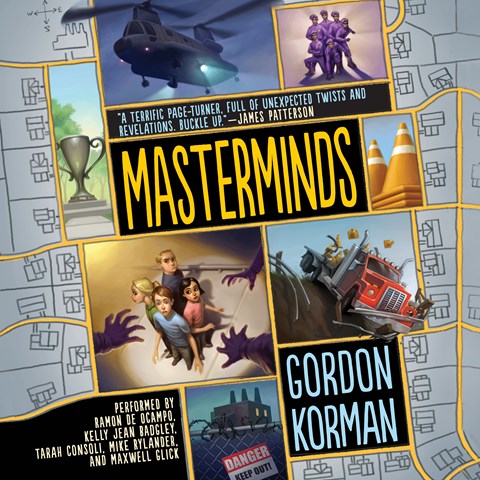
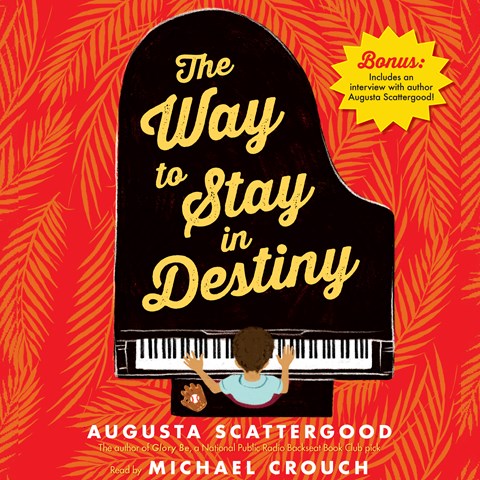



.png)




















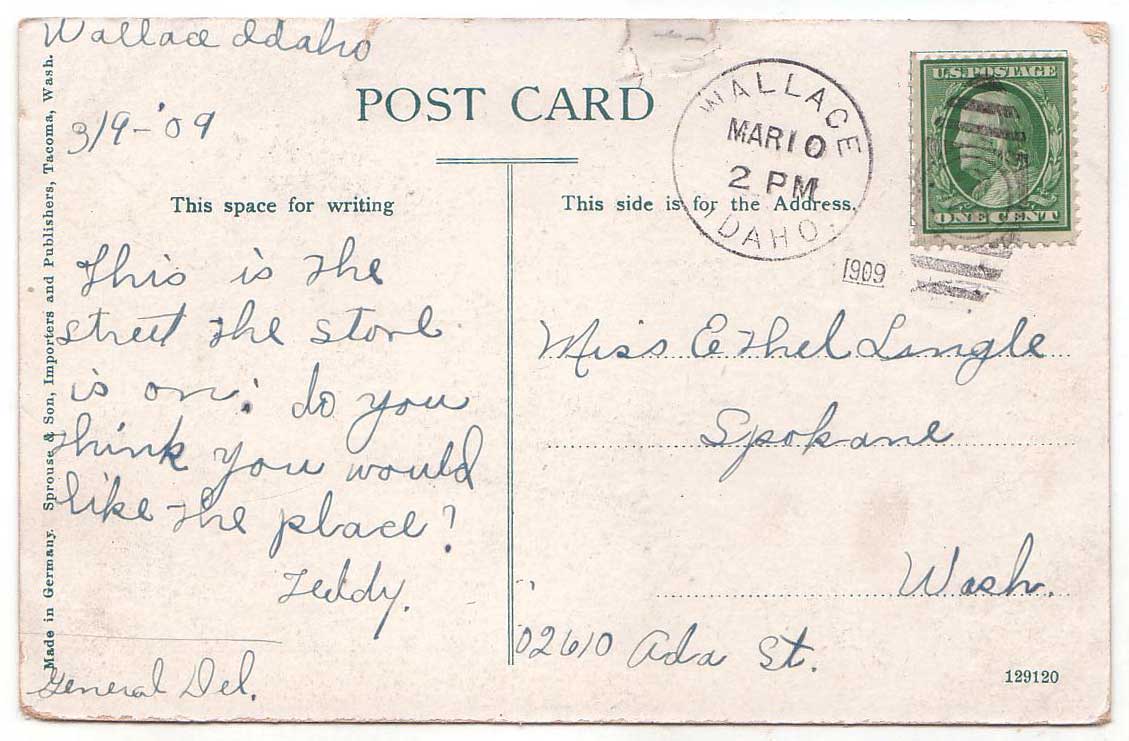



















 Martha Egan and Papalote Press have put together a seven-story collection of enjoyable, readable short fiction. Two of the stories feature automobiles, hence the “ranfla” title, and all take place in the state of New Mexico, hence the “New Mexico stories” subtitle. But for the latter add a subtle flavor of insider-outsider seasoning that I find curious. This doesn't diminish the pleasure of reading the collection, it adds an unsettling dimension that, perhaps, is another New Mexico element.
Martha Egan and Papalote Press have put together a seven-story collection of enjoyable, readable short fiction. Two of the stories feature automobiles, hence the “ranfla” title, and all take place in the state of New Mexico, hence the “New Mexico stories” subtitle. But for the latter add a subtle flavor of insider-outsider seasoning that I find curious. This doesn't diminish the pleasure of reading the collection, it adds an unsettling dimension that, perhaps, is another New Mexico element.

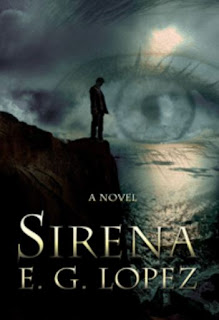






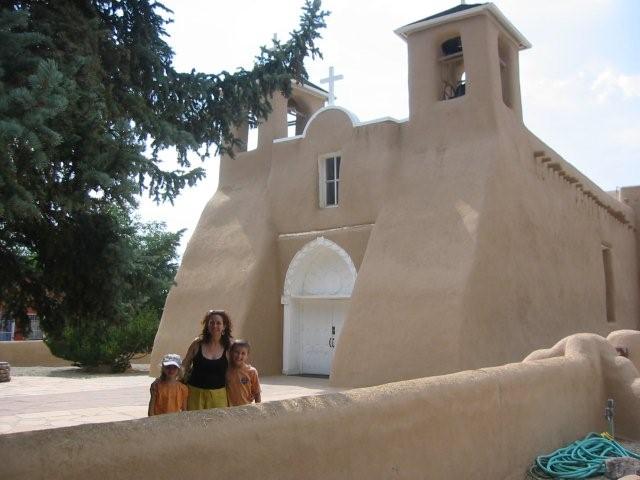

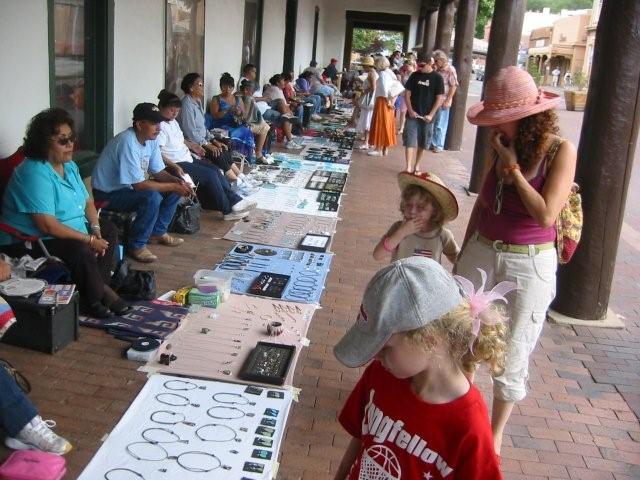















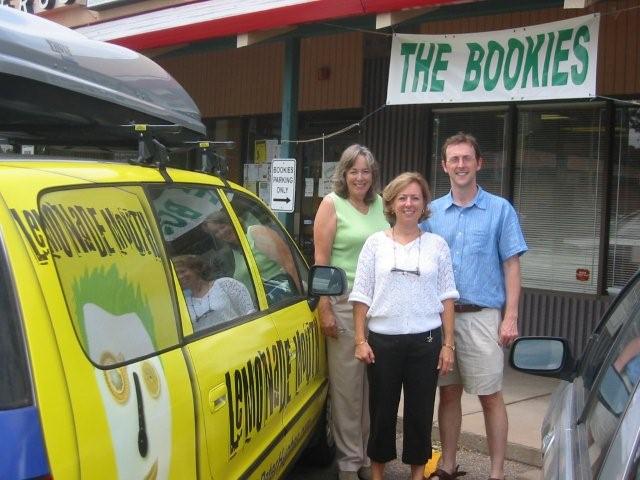









You want Hot Girls Pictures or Hot Videos.?? Most popular and famous hot Girls
hotentertainnews.blogspot.com
I struggle to believe in anything much other than the word of family and friends, but when you departed for Korea instead of Vietnam, I thought (briefly) that there must be a god and that the god had an incredibly strange sense of irony. You were real front line material, ready for sacrifice. But the writing on the wall entailed a then quiet hot spot on the DMZ. Not quite as good as a German posting but it served the purpose of preserving one of my favorite bloggers.
I read an article recently that said the DMZ was a prime example of the positive effects of reforestation on abandoned land. Just think, you contributed to that!
It is indeed a happy anniversary that you are here to write this!
I am Mike of the trio mentioned, "Barbara, Mike, and Brian."
Happy Anniversary!!!!!!
thank you, michael collins. you are my favorite political writer, you know.
mvs